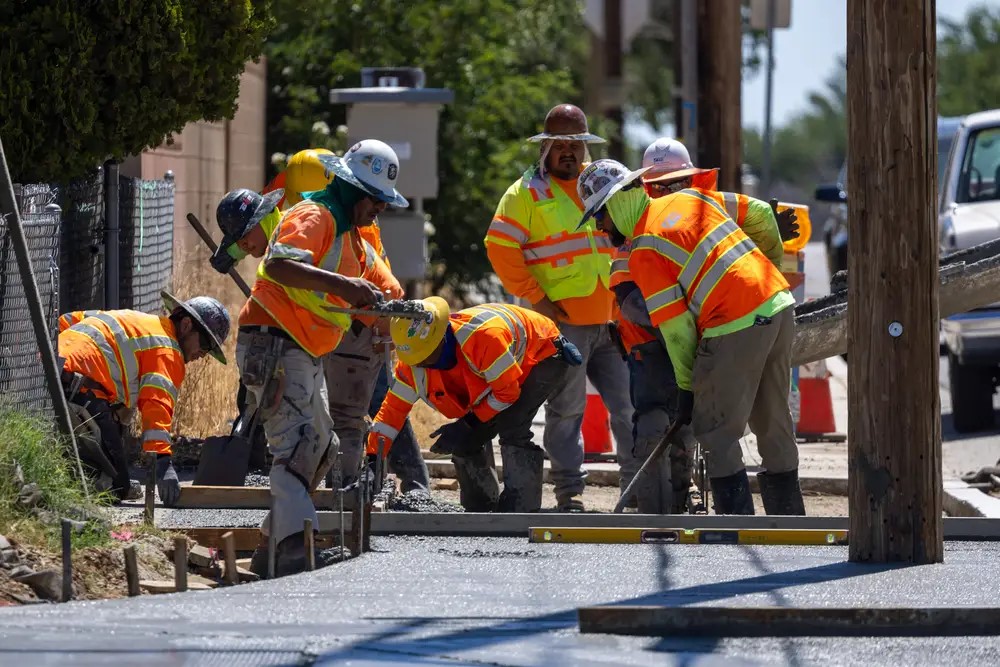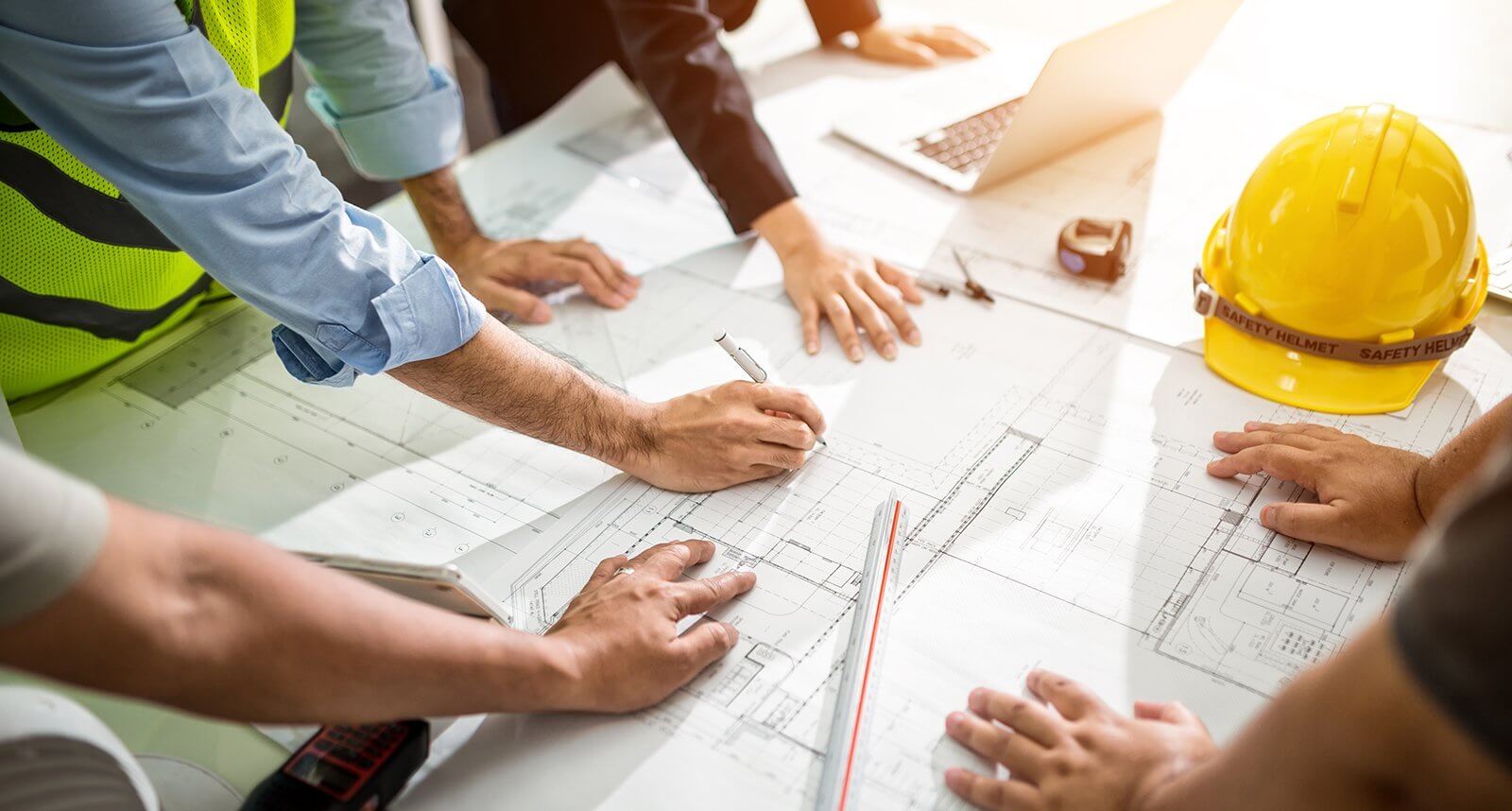by Jeffrey C Kadlowec, Architect
Abstract
Construction workers account for the largest portion of migrant laborers. This labor force is made up of both unskilled laborers and skilled tradespersons. They experience a variety of health risks that must be properly addressed. Improving their physical and mental health has economic benefits while promoting human rights.
Keywords: health needs, construction workers, migrant labor

Migrant Workers
Construction projects impact the physical structure of a community in response to current social needs. Construction workers account for the largest subgroup of the 164 million international migrant laborers [Onarheim 2021]. These temporary jobs are often filled by low skilled workers from lower income states and countries. This creates social issues that must be addressed by the host region and health industry with oversight from researchers, media, general population and governing bodies.
The span of the built environment is vast. It includes residential, commercial and industrial buildings; roads, bridges and walkways; parks, playgrounds and landscaping; water, power, gas, sewer, and telecommunication infrastructure [Rabionwitz 2022]. The goal of these changes are to promote health, prevent disease, improve safety and security, increase community pride, foster economic development, etc. Corporate social responsibility is the implied duty of all stakeholders and their actions to have a positive impact on society [Sharman 2016]. Becoming socially responsible improves the reputation of business and industries, minimizes risks for individual projects and the corporate image, provides advantages over competitors, and reduces costs through better relationships between companies and employees.
The construction labor force involves unskilled laborers and skilled tradespersons. In industrialized countries, it accounts for 5 to 10% of workforce and is 90% male [Weeks 2011]. The composition of the workers on any project is dynamic, with a mixture of contractors changing throughout the construction phases. This requires a variety of skilled trades and creates a high turnover because the projects consist of many different operations.
There is a wide variety of occupational health risks to the construction worker dependent upon their trade. These include exposure to harmful materials, frequent loud noise, excessive vibration, handling of heavy loads, and potential for falls from heights, electrical shock, and injuries related to moving materials and equipment [Collier 2018]. Preventative measures are necessary to avoid these negative outcomes. OSHA (Occupational Safety & Health Administration) provides a list of responsibilities that employers must follow to provide a safe workplace. Ensuring the health and well-being of employees is of growing importance in the realm of mental illness and work-related stress, while also establishing an environment free of discrimination and abuse [Abad 2021]. Maintaining clear and transparent communication is vital in this process.
Implementation of a safety program requires strong leadership, knowledge and experience in construction, and a non-authoritarian approach. Focus should be on continuous safety training, proper tools and equipment, compliance tracking, adapting the workforce, and implementing new technologies [Roberts 2021].
Improvements in the physical and mental health of laborers generate economic benefits and sustainable development while promoting human rights [Onarheim 2021]. Occupation health is dependent upon universal health coverage, access to affordable healthcare, and ethical treatment. Providing safe working environments, enforcing labor standards, and improving living conditions are the social factors that should also be addressed.
The success of any construction project is a product of the workforce. The needs of migrant construction workers are paramount. Although form always follows finance, the laborer should be the main focus of attention by both managers and stakeholders.
References
Abad, Adrian. (2021). How to Keep Workers Safe on Construction Sites. www.forconstructionpros.com/business/construction-safety/article/21366528/vatix-how-to-keep-workers-safe-on-construction-sites.
Collier, Ellie. (2018). Managing Occupational Heath in Construction. www.highspeedtraining.co.uk/hub/occupational-health-in-construction.
Onarheim, Kristine; Phua, Kai; Babar, Zahra; Flouris, Andreas & Hargreaves, Sally. (2021). Health and Social Needs of Migrant Construction Workers for Big Sporting Events. BMJ. 374. n1591. 10.1136/bmj.n1591.
Rabionwitz, Phil & Glinn, Andrea. (2022). Overview of Changing the Physical Structure of the Communty. ctb.ku.edu/en/table-of-contents/implement/physical-social-environment/overview/main.
Roberts, Hewitt. (2021). How to Improve and Promote Safety in Construction. www.ehstoday.com/construction/article/21165175/how-to-improve-and-promote-safety-in-construction.
Sharman, Jess. (2016). Social Responsibility and the Construction Industry. www.thenbs.com/knowledge/social-responsibility-and-the-construction-industry.
Weeks, James. (2011). Health and Safety Hazards in the Construction Industry. www.iloencyclopaedia.org/component/k2/item/518-health-and-safety-hazards-in-the-construction-industry.



